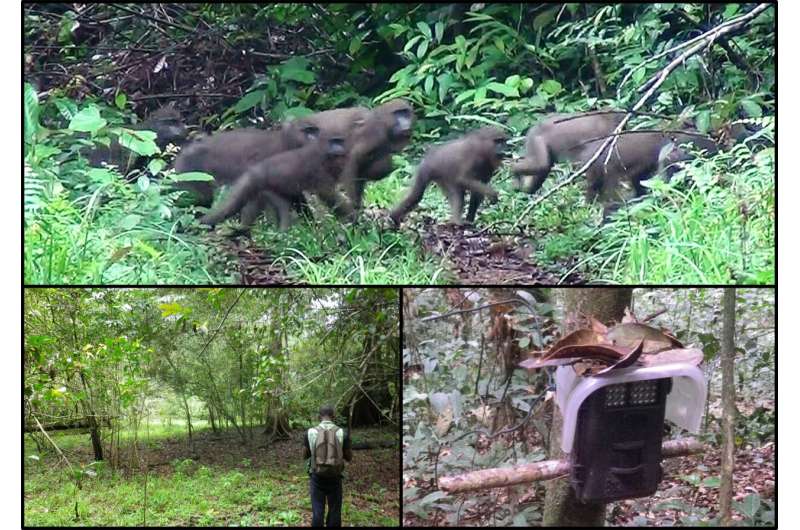Hybrid strategy captures a larger picture of wild mandrills

"Direct tracking of mandrills is a really tough job."
Kyoto University's Shun Hongo and his team spent five years following a primate group through the rainforests of Moukalaba-Doudou National Park in southern Gabon using their long-distance calls as a guide.
GPS telemetry is a researcher's preferred method of studying animal movements accurately as it covers a wider range of habitats. Mandrills, on the other hand, may feel differently about that choice as the animal would need to be anesthetized and captured.
Directly following and observing animals is a non-invasive way to record their movement and behavioral data, but this is also labor-intensive for the researchers and involves a lot of sweat and bloody cuts. Following animals is, therefore, less cost-effective in retrieving sufficient data as a method of generalizing the findings to the study population.
The use of camera traps resolves this issue. In a marriage of ideas, trail cameras complement data from direct observation and create a more complete picture of the general trend of mandrill movement.
Hongo's team also collected two years' worth of video data from camera traps. These reveal that mandrill groups change their travel speed during the day and that the pattern of change differs between the high fruit and low fruit seasons.
During the high fruit season, the daytime movement rate patterns appeared less consistent, whereas the low season showed a flattening or a kind of uniformity in the daytime movement pattern.
Such flexible dietary and ranging behaviors could influence how large groups of mandrills sustain themselves.
"We also find that the groups move exclusively during the daytime," Hongo observes. Video footage did not show any evidence of night-time movement, suggesting that the mandrills stay up high in the trees to sleep and to avoid predators, such as leopards.
To Hongo and his team, it is gratifying that their direct observation data are consistent with the data from the large-area camera traps. He adds, "We hope to see more multi-method approaches to a single research question and studies of populations of interest incorporating different angles."
The research was published in the Journal of Mammalogy.
More information: Shun Hongo et al, Seasonality in daily movement patterns of mandrills revealed by combining direct tracking and camera traps, Journal of Mammalogy (2021). DOI: 10.1093/jmammal/gyab141
Journal information: Journal of Mammalogy
Provided by Kyoto University




















